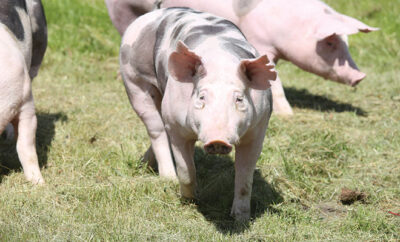
Sharing Education: Social Support for Children with Food Allergies
There are 5.6 million children estimated to have food allergies in America and this number is steadily rising. Just in the last decade, the rate has more than doubled. According to FARE, the world’s leading non-governmental organization engaged in food allergy advocacy, over 170 foods have been reported to be the cause of allergic reactions.
There are nine major food allergens (with sesame being a growing concern) that can be attributed to the cause of more severe reactions, called anaphylaxis, which requires emergency care treatment. Recent data indicates that many fatal food reactions usually happen after consuming foods outside of the home, such as at school or in other social settings.
Social Anxieties and Food Allergies
Children with food allergies and their families often encounter social anxiety when engaging with others, especially in settings where food is involved. Lack of sympathy from others might negatively impact how an individual manages fear and anxiety of food allergies. It is not uncommon for a child with a food allergy or her parent to feel that they are an inconvenience due to their unique circumstances. Symptoms of food allergies range from mild, such as itchiness and hives, to more severe such as swelling of parts of the body or difficulty breathing.
The Benefits of Knowing
It is important to recognize signs when you are exhibiting an allergic response or even with someone you are socially engaging with who has the known food allergy. I clearly recall my son Chop’s first allergic reaction while on a playdate eating ice cream for the first time. A family member who had previously been diagnosed with food allergies recognized the signs of an allergic reaction and quickly acted. It was later confirmed that there were at least two ingredients that he was responding to. It would not be the last time that he would experience a reaction while in the company of friends and family. Not only was educating Chop important but teaching everyone in his circle to understand his allergies, know the signs and symptoms, and what to do to support him were all essential to his overall health and well-being.
Individual and Peer Support
There are several ways that individuals and organizations can support themselves and offer support to those living with and managing food allergies. Many schools encourage classroom and building safety by promoting inclusion and implementing peanut-free zones. Children with allergies can also share information with their friends about their allergies and how to help them spy food allergens and reaction signs. Parents can opt to share their child’s emergency care plan with school officials in the event their child shows signs of an allergic reaction. There are local and virtual support groups available. These groups can offer support not only for children, but for parents who manage allergies for their children as well.
Managing Risks
Chop was quite young when it was discovered that he had several allergies. It simply was not realistic to isolate him, refrain from daycare and avoid social events altogether. He was growing and would need emotional love and support beyond those in our household. We had to teach others who cared about him the ways they could be extra eyes and ears for our son. It was important early on to normalize support and advocacy even with Chop’s peers. Cousins and friends understood the “no food sharing” rule without permission of a trusted adult in charge. Our village has become allies against food allergies for Chop, which empowers him.
Chop and his younger sister, Journey, partner with me in educating their peers about food allergies. They depict characters who live similarly to them in their children’s book series, Journey with Us by Chop Friendly. The series highlights and promotes food allergy awareness and shows how children might support their peers with unique differences or “superpowers.” Those closest to Chop, like Journey, learned early on how to recognize universal food allergy symbols and to read food labels to support her brother.
If you have a child with food allergies, are a supportive parent or are someone who wishes to ally, information is available to support someone managing food allergies. There’s no such thing as a child being too young to be educated on the effects of food allergies or to learn how to support friends. Many resources exist to educate children, families and the community to safely accommodate and include children with food allergies.
In addition, as of January 1, 2023, sesame will be labeled on packaged foods sold in the U.S. just as the other top allergens of milk, egg, peanut, tree nuts, wheat, soy, finned fish and crustacean shellfish have been labeled since 2006. The FASTER Act, signed into law April 23, 2021, gives parents and children the opportunity to identify another potentially deadly allergen.
Sources: foodallergy.org and chopfriendly.com.







